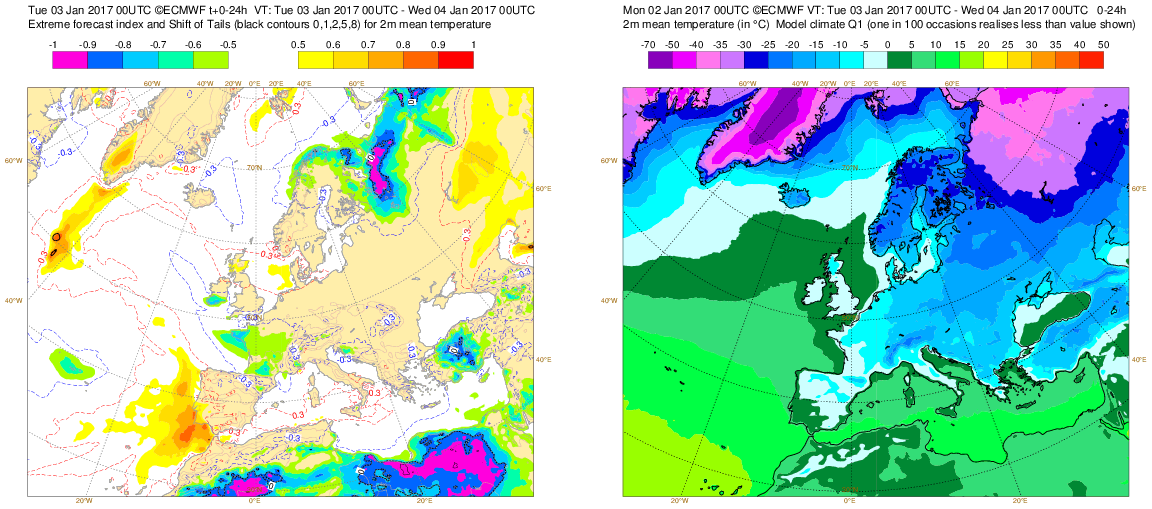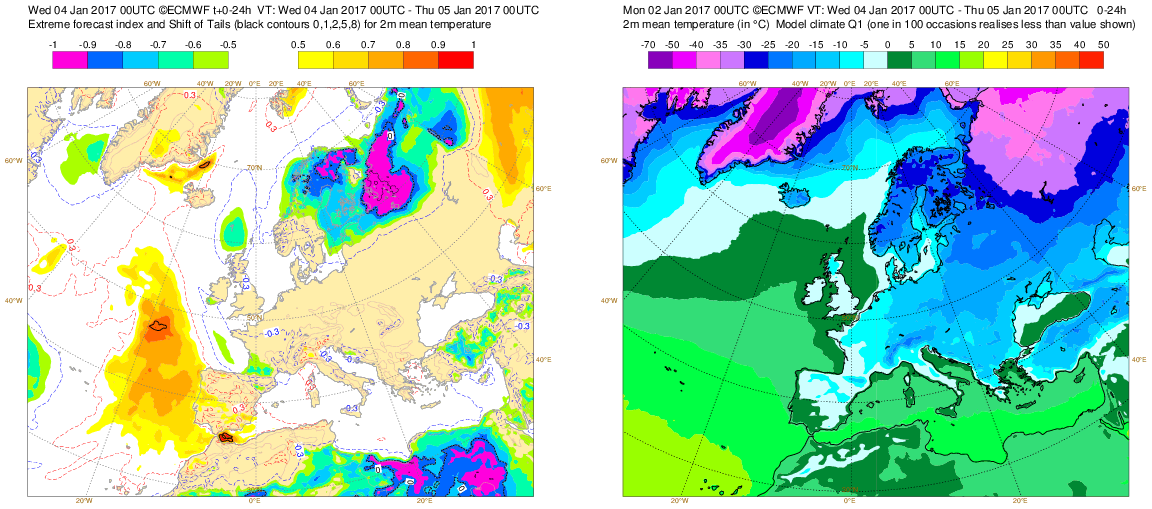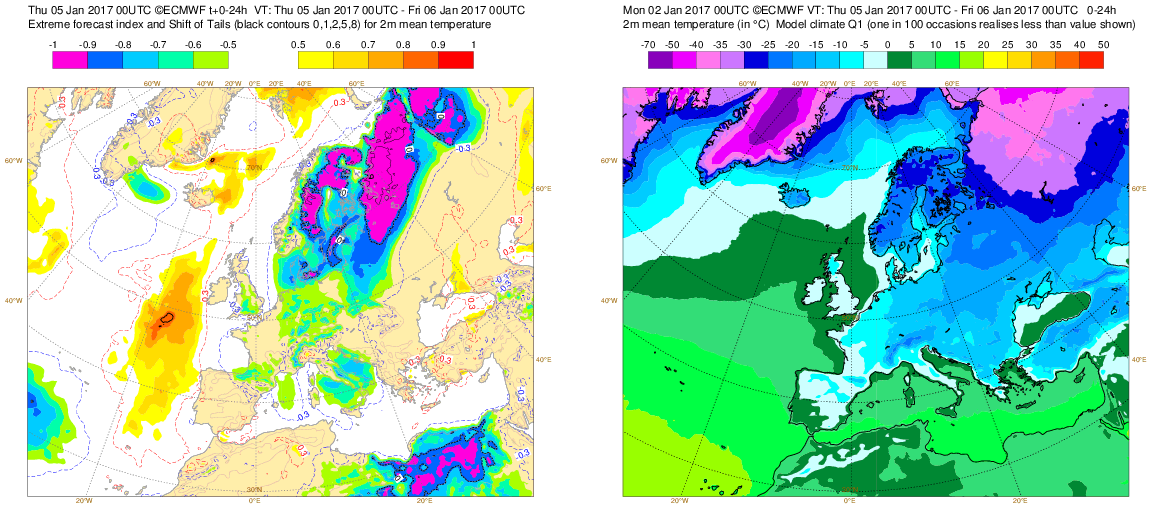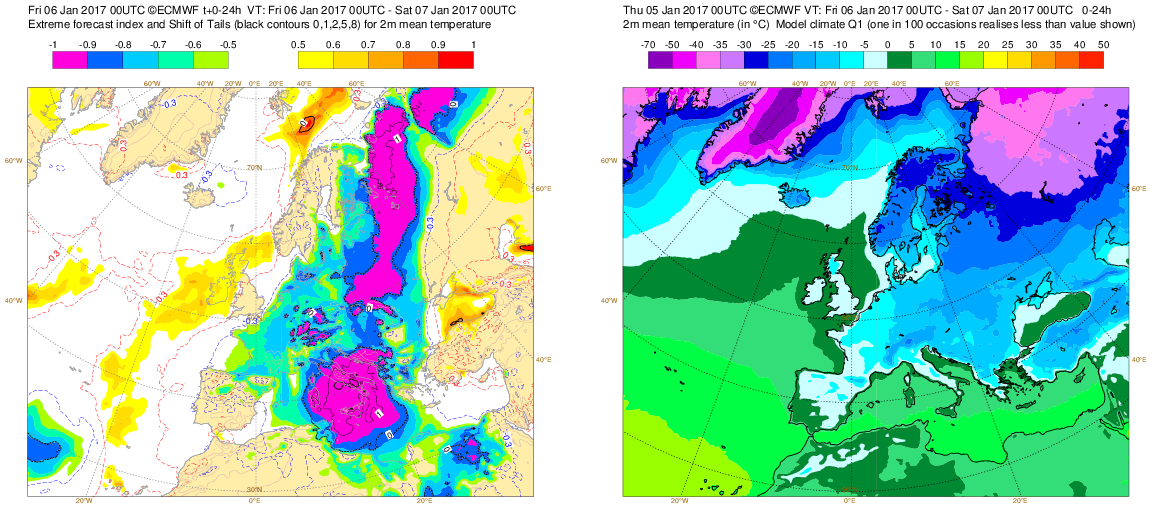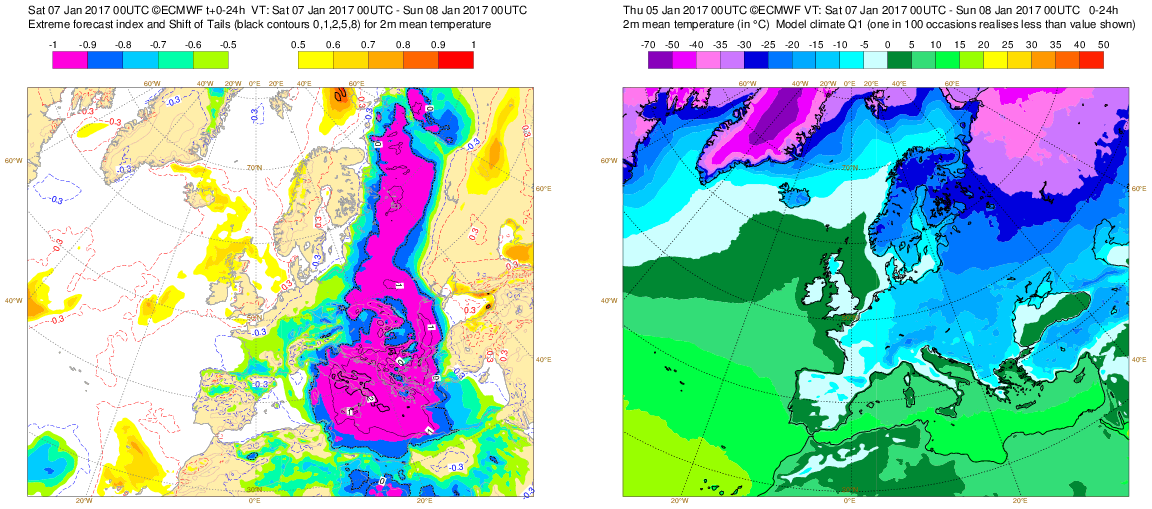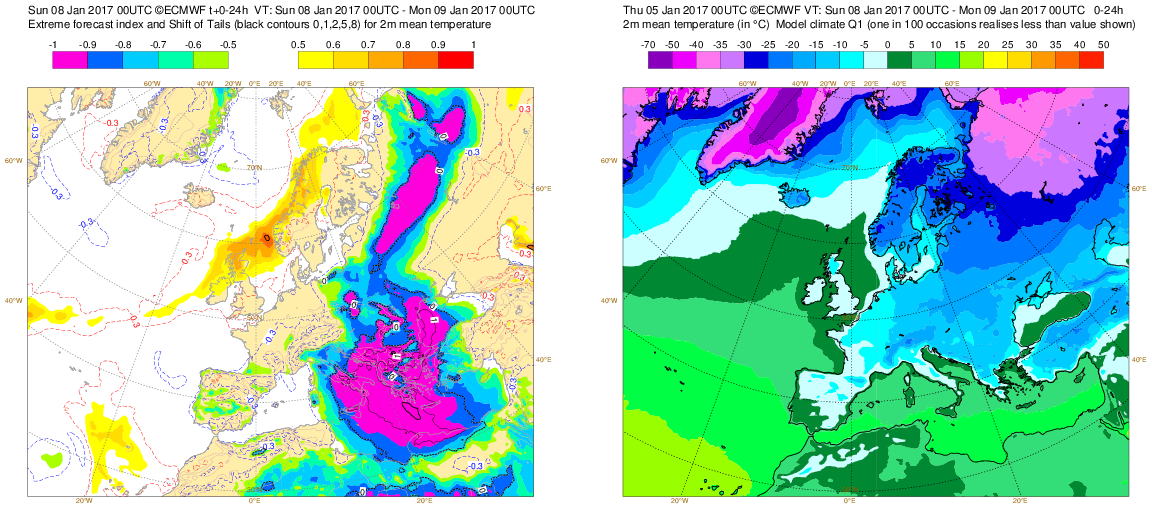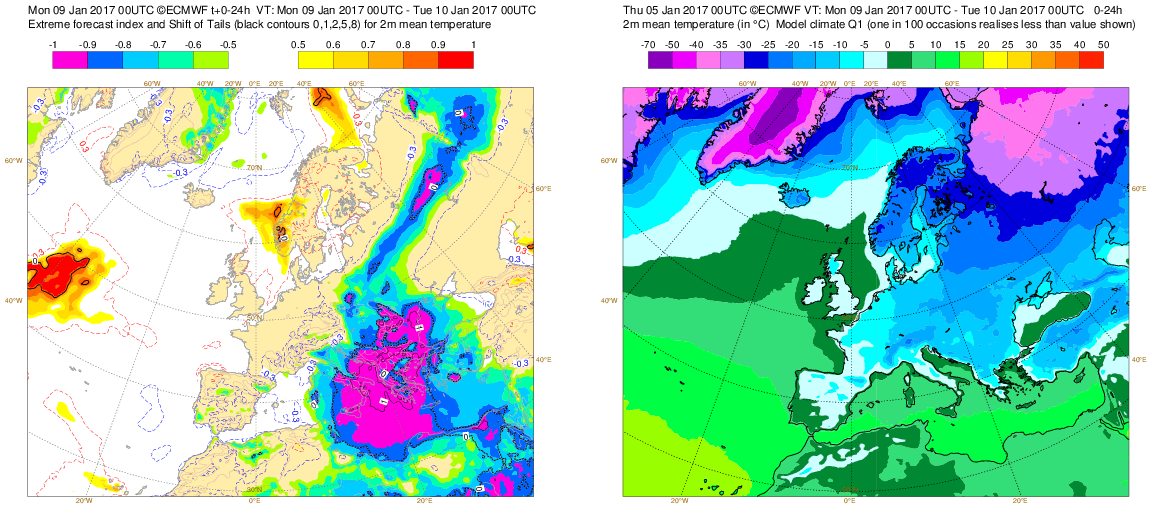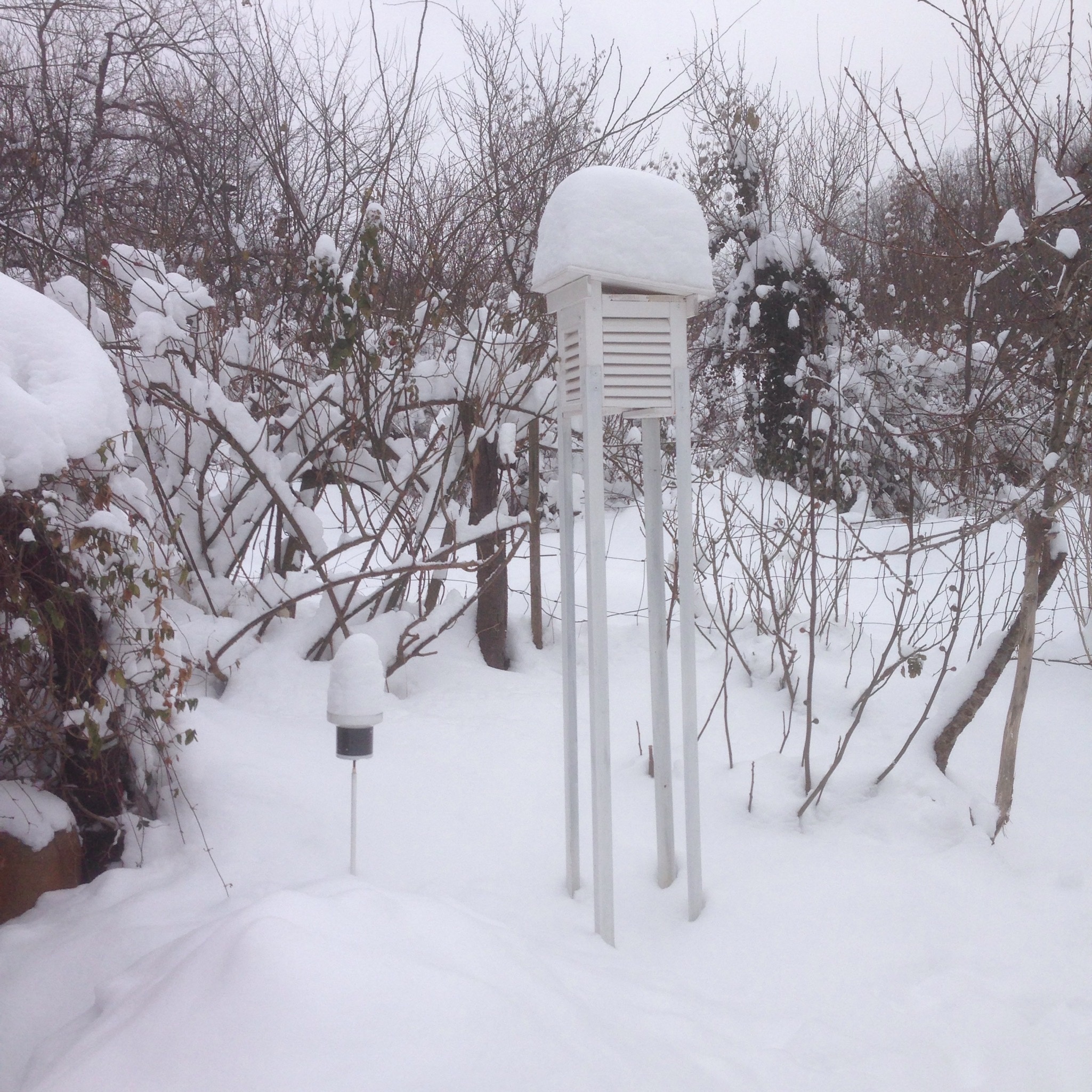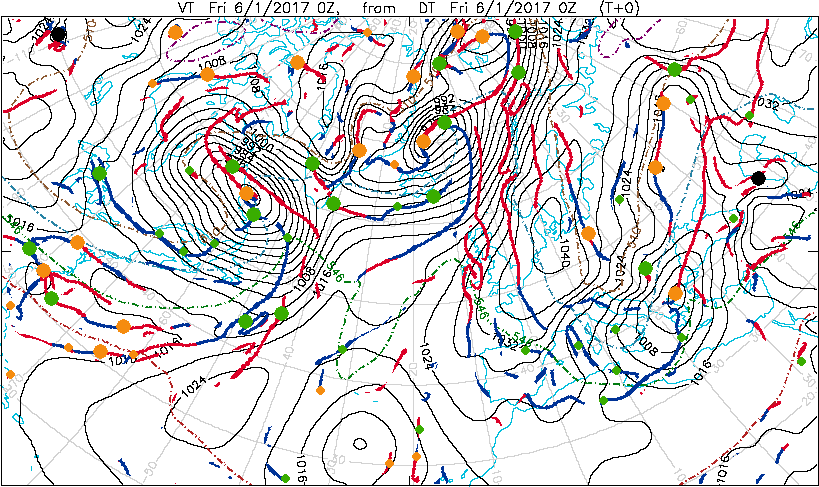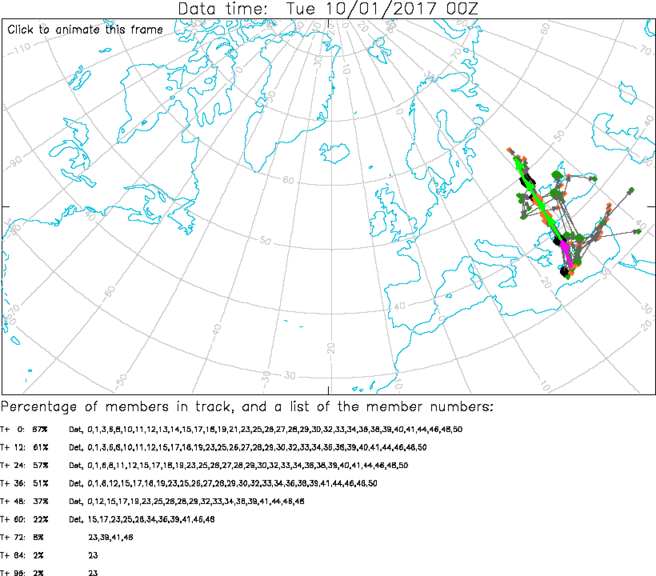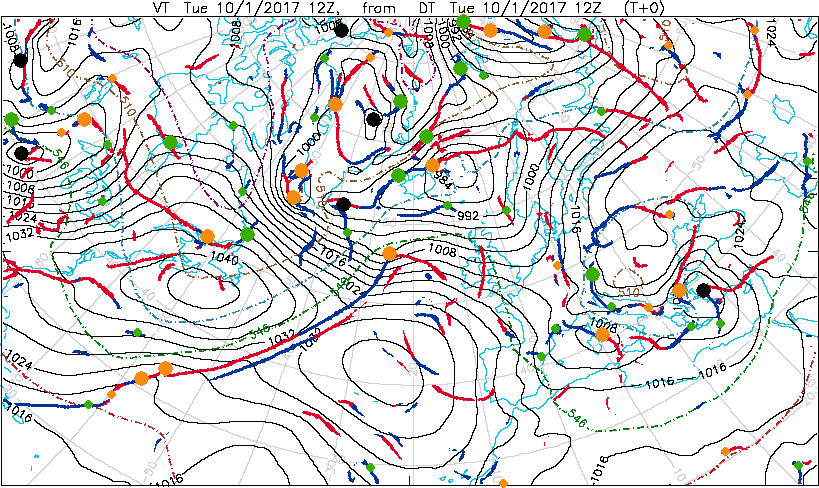...
The plots below show EFI and SOT for 2-metre temperature day 1 as a proxy for analysis of how extreme the temperature were from 2 to 9 January.
One of the most affected countries by heavy snowfall was Bulgaria. Two major snowfall events caused by Mediterranean cyclones hit the country with the most affected area being eastern and especially north-eastern Bulgaria where many roads were closed and many households were left without power due to blizzard conditions. Strong winds and heavy snowfall created deep piles of snow up to 2 metres. On 11th of January snow depth exceeded extraordinary values of 1 metre in some parts of the country. Temperatures plummeted to -26C in the SW Bulgarian town of Blagoevgrad in the morning on the 8 January.
Photographs of heavy snowfall in Bulgaria: deep piles of snow in NE Bulgaria report on one of the major Bulgarian TV stations (left), heavy snowfall on the beach in the coastal city of Burgas, SE Bulgaria (middle) and snow in around a personal weather station in the mountainous town of Troyan in the middle of the country (right).
A deep Mediterranean Cyclone passing along the southern route IIIa that caused heavy snowfall and blizzards over NE Bulgaria on 6-7 January 2017.
Another Mediterranean cyclone again on IIIa route caused again blizzards in NE Bulgaria on 10 January 2017.
Snow depth analysis from the Bulgarian National Met Service (NIMH) using snow depth reports and ALADIN model for 5th of January before the event (left) and 11th January (right) after two consecutive snowstorms.
3. Predictability
3.1 Data assimilation
...

